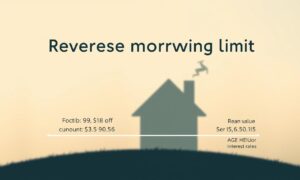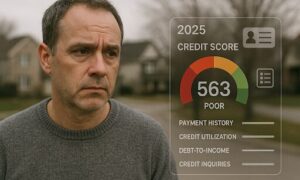Credit is money you borrow and use to buy anything from groceries to a new home, assuming you’d repay the lender later, usually at a fee. It’s acquiring things in life when you lack the financial means. You’re spending money from a bank or credit card business. Here are the different types of credit.
Open Credit
Open credit is a preapproved loan between a financial institution and a borrower that can be used several times up to a specific limit and then repaid before the due date. The lender will specify the preapproved amount in the lender-borrower agreement.
You are given an open-ended credit line with a set maximum that you can draw on as needed, paying only interest on the amount borrowed. Credit cards and lines of credit are popular open-end credit products. You can draw on the credit line indefinitely if you repay the amount. You may be able to retrieve the funds via cheque, credit card, or electronic transfer.
Open Credit Usage
Certain types of open-end credit have no expiration date. For example, you can repay your debt and reborrow with a credit card as long as the card issuer allows you to continue using the credit product. You can indefinitely use your open-end credit card if the card issuer is still in business and the account is in good standing. While some credit lines, such as personal loans, have set draw and repayment periods, you still have years to borrow and repay.
Because of the cyclical nature of available credit, it appears on your credit report differently from other credit. Your credit limit and amount influence your credit utilization rate, which can help or hinder your credit score based on how you utilize the account.
Electricity bills, gas bills, telephone bills, and so on are all examples of accessible credit, i.e., use first, pay later, and available to anyone.
Installment Credit
Banks provide credit in the form of installment credit. When you acquire credit from a bank in the form of a loan, the bank establishes a defined monthly installment and interest as the loan repayment method for a predetermined time until the loan is repaid in full, including interest. If a borrower fails to make an installment payment on time, the bank or financing firm imposes a penalty.
When you get installment credit, you borrow a certain amount of money and make fixed monthly payments until the obligation is paid off. You can pay installment credit back over months or years. Its interest rate may be constant or variable, which means it may rise or fall in the future.
Additional expenses may apply to installment loans, such as origination or late fees. Before taking out an installment credit, you should carefully study the credit agreement to establish the exact amount you will pay.
The following are typical installment credit examples:
Mortgage
A mortgage is a loan used to fund the purchase of a home. If you cannot make mortgage payments, your lender may repossess your home. Mortgages are often available in terms of ten, fifteen, or thirty years, with a fixed or variable interest rate.
Furthermore, if your down payment is less than 20 percent of the home’s selling price, you will be responsible for closing charges, taxes, and potentially private mortgage insurance.
Car Loan
Car loans, like mortgages, typically need a down payment and the lower the installment credit, the bigger the down payment. An automobile loan, like a mortgage, is secured by your vehicle, which means that if you fail to repay the loan, your car may be repossessed by the loaning company.
An automobile loan typically has a length of 36 to 72 months, but longer terms are becoming more common. According to Experian data, 38 percent of new passenger vehicle loans in the first quarter of 2019 ranged from 61 to 72 months.
Personal Loan
A personal loan can be used for various things, such as debt consolidation or home improvement financing. Personal loans are unsecured, as opposed to mortgages or auto loans, which are secured. As a result, depending on your credit score, their interest rates could reach as high as 36 percent. Personal loans in the $1,000 to $50,000 range are routinely offered, with a repayment duration of two to five years.
Revolving Credit
Revolving credit is continuous credit in which the lender grants credit to the borrower as long as the account is current and open through regular payments, such as a credit card, which provides credit regularly with a credit limit and monthly or quarterly payments required. The lender will grant credit monthly because the account will remain open until closed.
Revolving Credit Usage
A credit limit is established on a revolving credit account, reflecting the maximum amount of credit spent on the account. You can pay off the debt at the end of each billing cycle or carry it forward from month to month, which is referred to as “revolving” the balance.
A monthly minimum payment is required when a balance is rotated. This payment could be a set amount, such as $25, or a percentage of your overall compensation, whichever is greater; you can find information in the fine print of your revolving credit agreement.
Any delinquent debt will also be subject to monthly interest. (A credit card or line of credit with a zero percent introductory rate is an exception). There may be additional expenses, such as annual, origination, or late payment fees.
HELOCs
Credit cards, personal lines of credit, and home equity lines of credit are all examples of revolving credit (HELOCs). You can use credit cards for large or little purchases; credit lines are frequently used to finance extensive house remodeling or maintenance expenses.
A line of credit allows you to withdraw funds from your account up to your credit limit, and when you repay it, your credit limit increases. It is essential that you learn about 500 Credit Score Credit Cards to get the best out of revolving credit.
Secured and Unsecured Credit
A secured credit loan or line of credit is when a lender approves based on collateral or existing assets such as real estate or other valuable commodities. Because the lender has a right to the collateral in loan default, this credit typically has a higher credit limit and a lower interest rate. Secured credit is generally used to fund large purchases such as auto loans and home mortgages.
Unsecured credit is a loan or line of credit provided by a lender to a qualifying applicant based on their credit history, financial stability, and other underwriting criteria. Unsecured credit, as opposed to secured credit, does not require collateral or other assets as a guarantee of repayment. As a result, because the lender accepts a more significant risk if the borrower defaults on the loan, unsecured credit often carries a higher interest rate.
Keep a Good Credit Mix
To improve your credit score, mix up your credit accounts and keep track of them. Your credit score will improve if you have all these types of credit and use them appropriately. However, their uncontrolled usage may have the opposite effect. Make wise decisions.

































